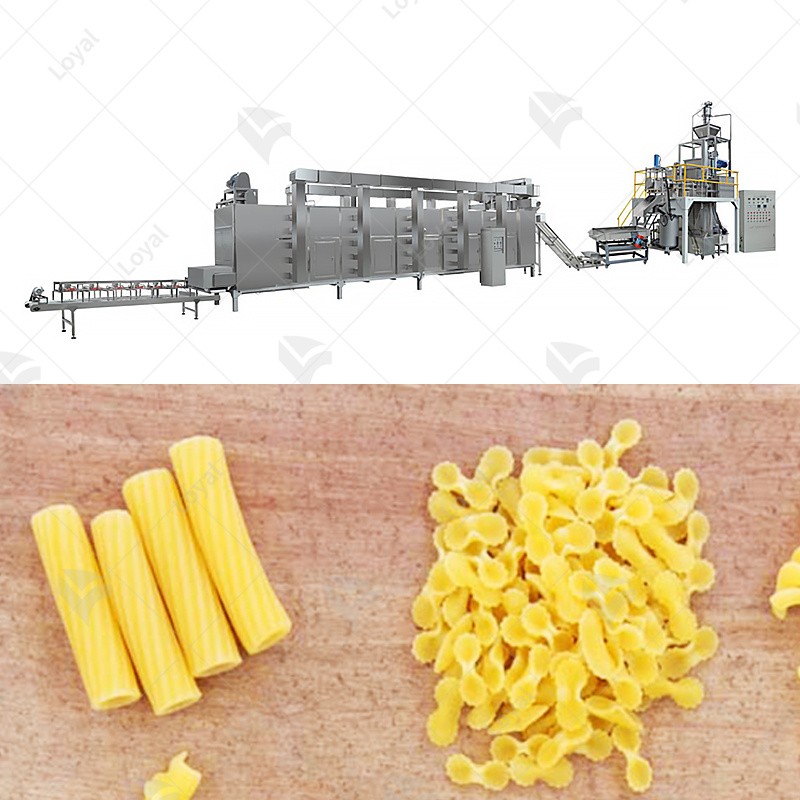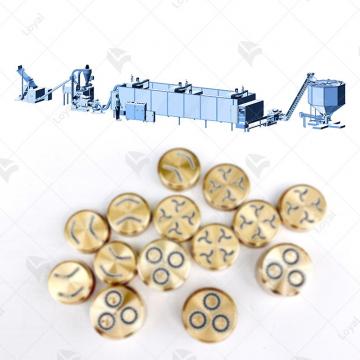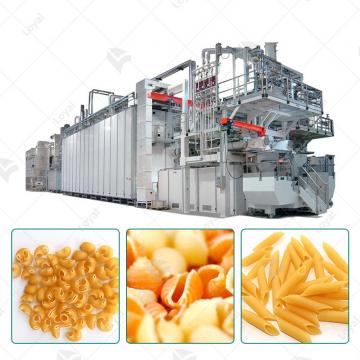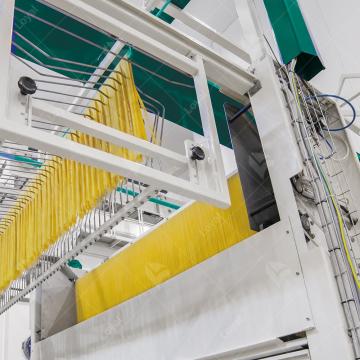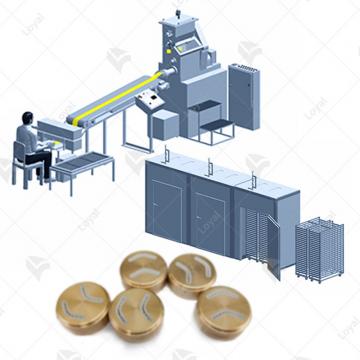Revolutionizing Production: Full Automation Strategies for Dry Pasta Suppliers
Revolutionizing Production: Full Automation Strategies for Dry Pasta Suppliers
Introduction
In the dynamic landscape of the food industry, the dry pasta sector stands as a testament to the rich heritage of culinary traditions. This article delves into the revolutionizing production methods for dry pasta suppliers through full automation strategies. As the demand for efficiency and sustainability continues to shape the market, we explore how embracing automation can redefine the future of pasta manufacturing.The Dry Pasta Production Line technology of Shandong Luoya Industrial Co., Ltd. has introduced advanced technologies from HEMAKS and Capitanio .
The dry pasta industry has a storied history, deeply rooted in cultural and gastronomic traditions. With global consumption on the rise, suppliers face the challenge of meeting demand while maintaining product quality. This section sets the stage by providing an insightful overview of the dry pasta industry, highlighting its significance and the current market dynamics.
Current Challenges in Dry Pasta Production
While the allure of handmade pasta persists, the industry grapples with several challenges that hinder scalability and consistency in production.
The reliance on manual labor not only leads to increased production costs but also limits the capacity to meet growing market demands. In this section, we explore how manual processes contribute to labor intensity and hinder overall efficiency.
Maintaining consistent quality is a paramount concern for dry pasta suppliers. Quality control issues arising from manual production methods can result in variations in texture and taste. We delve into the repercussions of these challenges and their impact on consumer satisfaction.
Traditional pasta production methods often have adverse environmental effects. From excessive water usage to energy-intensive processes, this subsection explores the ecological footprint of conventional pasta manufacturing.
The Need for Automation in Dry Pasta Manufacturing
To address the challenges outlined above, the dry pasta industry is increasingly recognizing the imperative for automation. This section explores the multifaceted advantages of adopting automation in pasta manufacturing.
Automation brings unparalleled efficiency gains, streamlining production processes and reducing operational costs. Expert opinions, such as those from renowned industry analyst [Expert Name], emphasize the potential for significant financial benefits.
The precision offered by automated machinery ensures uniformity in every batch. We explore how brands like Barilla and De Cecco have leveraged automation to uphold their reputation for consistent, high-quality pasta.
Technological Solutions for Full Automation
The transition to full automation involves leveraging cutting-edge technologies. This section scrutinizes the technological solutions reshaping the landscape of pasta manufacturing.
Robotic systems and advanced machinery play a pivotal role in automating various stages of pasta production. We discuss specific technologies employed by leading suppliers and the impact on operational excellence.
The integration of Artificial Intelligence (AI) further refines the manufacturing process. AI algorithms optimize production parameters, ensuring efficiency and reducing waste. Expert insights from [AI Expert Name] provide a deeper understanding of the transformative power of AI.
The Internet of Things (IoT) is increasingly being incorporated into pasta production. This subsection explores how IoT-enabled smart manufacturing enhances real-time monitoring and decision-making, citing examples from innovative suppliers.
Case Studies of Successful Full Automation Implementation
Real-world examples provide tangible evidence of the benefits of full automation. This section analyzes case studies from leading pasta manufacturers.
By examining the journey of XYZ Pasta Co., we uncover the challenges faced, strategies implemented, and the tangible outcomes of embracing full automation.
ABC Noodles Inc.'s innovative approach to automation serves as an inspiration for other suppliers. We explore the unique solutions they adopted and the positive impact on their market position.
Future Prospects and Trends in Automated Pasta Production
As technology continues to evolve, the future of automated pasta production holds exciting prospects. This section forecasts upcoming trends and developments.
Anticipated technological advancements, such as [Emerging Technology], are poised to redefine the landscape of automated pasta production. Insights from tech futurists like [Futurist Name] provide a glimpse into what the future holds.
The evolving tastes and preferences of consumers shape the trajectory of the pasta market. This subsection analyzes market trends and consumer behavior, offering valuable insights for future-proofing production strategies.
Despite the promising future, challenges may arise. We discuss potential hurdles and strategies to mitigate risks, drawing on the expertise of risk management specialists like [Risk Management Expert Name].

Conclusion
In conclusion, the adoption of full automation strategies by dry pasta suppliers is not merely a technological upgrade but a fundamental shift towards sustainability, efficiency, and consistent quality. The benefits, as highlighted throughout the article, position automation as the catalyst for the next era of pasta production.
A succinct recap emphasizes the financial, environmental, and quality benefits that come with the revolutionizing approach to pasta manufacturing.
The article concludes with a compelling call to action, urging dry pasta suppliers to embrace automation for a competitive edge in the market. The time to revolutionize production is now, and the path forward is illuminated by the success stories of industry pioneers.

